Marketing cars, and especially to blokes, is a very tricky affair. Despite the continual improvements in automotive engine design, where manufacturers constantly squeeze more energy out of smaller displacements, your typical Neanderthal will be resistant to change and thinking that anything coming in at two litres better be either a bottle of milk, or sauce.
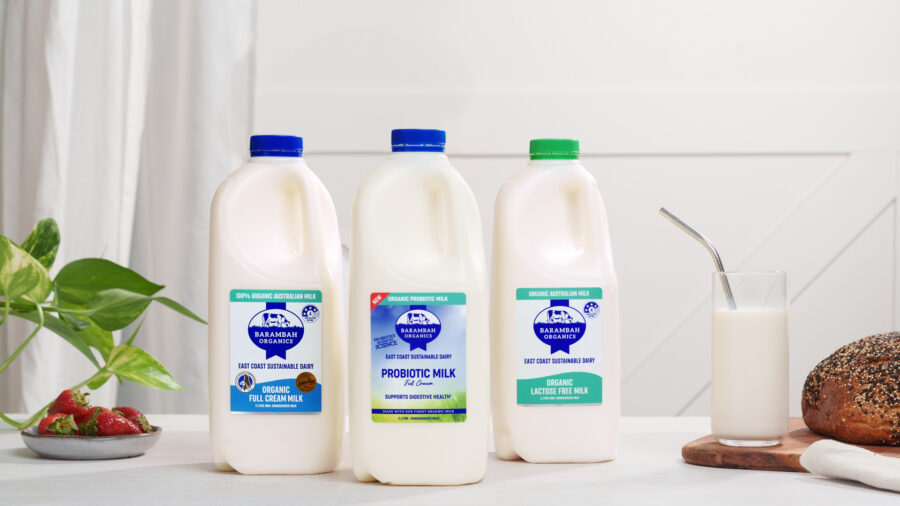
Two-litres will very shortly be the new-normal for plenty of 4WDs as manufacturers apply hybrid tech to their product line-up, the battery pack putting the extra zing into the step of your ute or wagon, alongside a small capacity petrol engine, “Sacre Bleu” (French for FFS), so you better get used to smaller, not bigger, being the new norm.
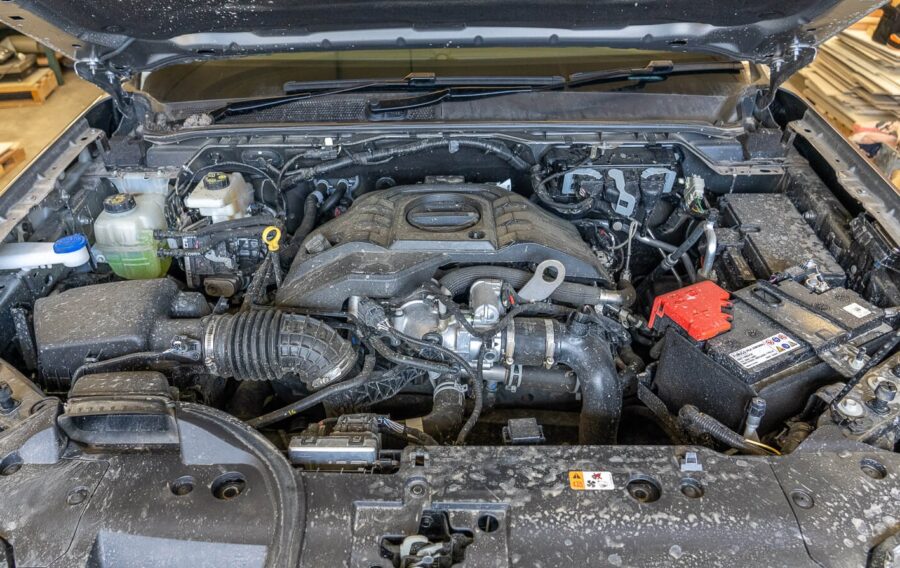
So it goes with Next-Gen Ranger, because the choices are either the bigger capacity three litre V6, or a two-litre bi-turbo four-cylinder, both in diesel. No prizes for guessing that Ford has been warming up the punters up for the next-big-hybrid-thing over the last four years with the bi-turbo. Expect a mid-life hybrid Ranger around 2026.
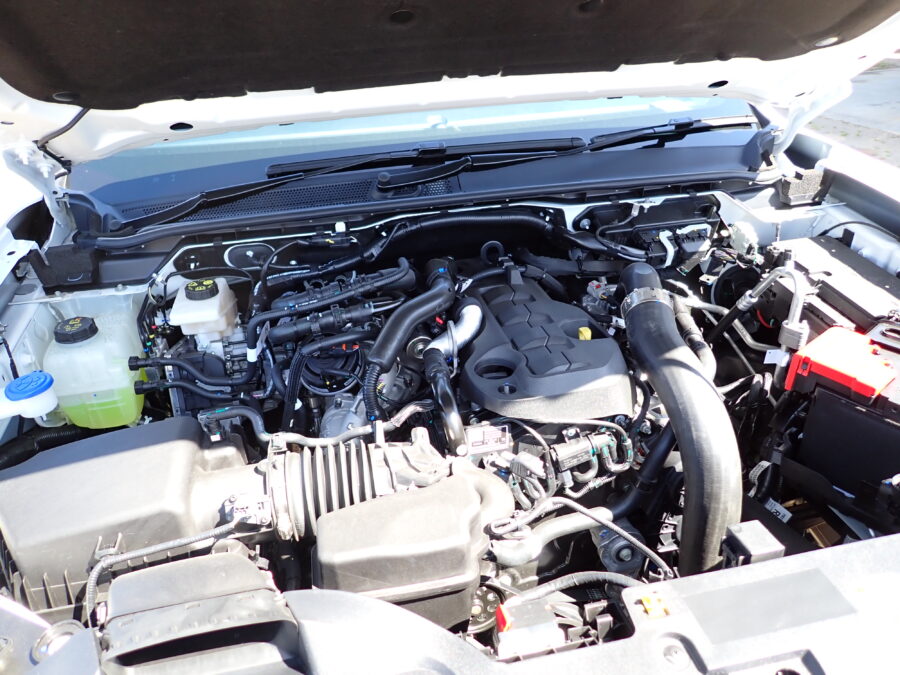
I better take a look at how many neddies you’ll have to tow that house on wheels or the boat you’ve got in mind.
I can quote the brochure stating that the bi-turbo is good for 154kW@3,750rpm, along with 500Nm between 1,750-2,000rpm. The V6 giddy-up peaks at 184kW@3,250rpm, with 600Nm between 1,750-2,250rpm. They’re respectable numbers, because anyone offering a dual-cab with less than 500Nm of torques in this day and age is a couple of skippies short in the top paddock and in denial, when the world wants to tow big shit.
I’ve had the luxury of plenty of bum-on-seat time recently with both of the Rangers and what I’m going to tell you in my summary might rock the boat a little, because what’s best, in-my-humble-opinion, isn’t what you’re all naturally assuming.
Next-Gen Ranger is a significantly better vehicle than what came before it and I have to admit to being a little surprised by that, because its underpinnings were based on roughly the same chassis architecture as before. I was expecting the same handling dynamics, but it is a sharper steering, more comfy, and, safer driving experience.
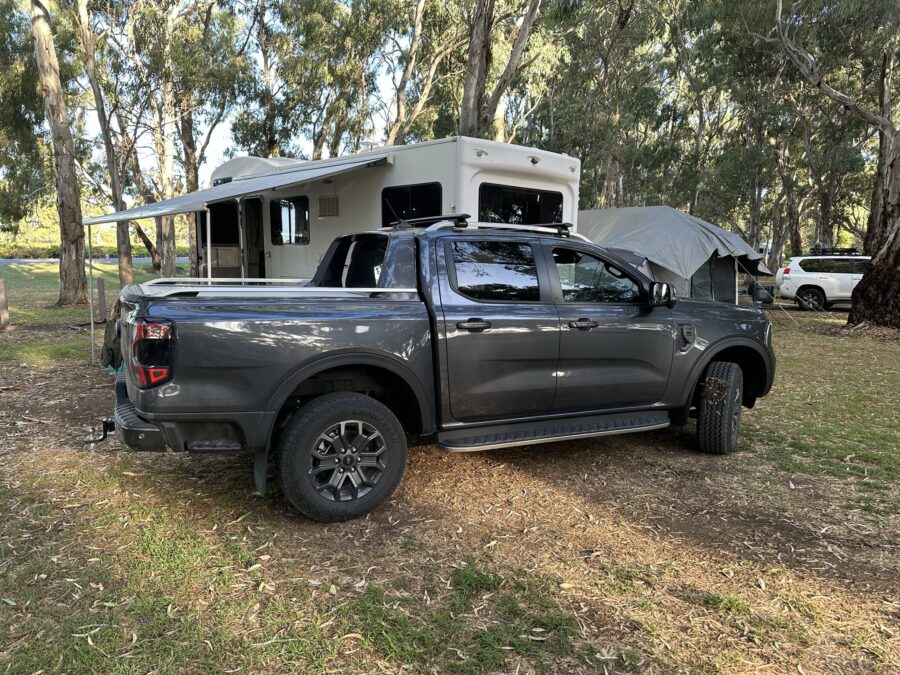
Dimensionally, Ranger sits the biggest of the typical Thai dual-cab utes we drive in Australia, measuring 5,370mm in length and 2,208mm wide (including the mirrors), with a quoted 234mm of ground clearance and approach 30 degrees, ramp-over 21 degrees and departure 23 degrees for all the important off-road angles. The turning circle is three-point-turn-wide at 12.9 metres.
How about the mass story?
Ford quote a kerb weight of 2,329kgs for the two litre and 2,384kgs for the V6, whilst the gross vehicle masses (GVM) are 3,280kgs and 3,350kgs respectively and leaving payloads of 951kgs and 966kgs. The gross combined masses (GCM) are 6,350kgs and 6,400kgs, and Ford is sticking to the great towing lie of being able to tug 3,500kgs in standard form. My maths says that means leaving either 430kgs or 450kgs of your potential payload behind. Maybe the upside of that calculation means you can be justified in leaving the kids and all their holiday shite behind! Hmmm.
I’m not going to comment on the bibs and bobs you’ll find in the cabin because they’ve been reported on elsewhere, except to say that the chairs are very comfy and the NVH (that’s Noise Vibration Harshness) are way better than my usual conveyance. The big TV screen dominates the interior and it is endlessly electronically connected to all the car’s parts. Both Wildtraks exude a quality, premium feel, that other ute makers don’t match.
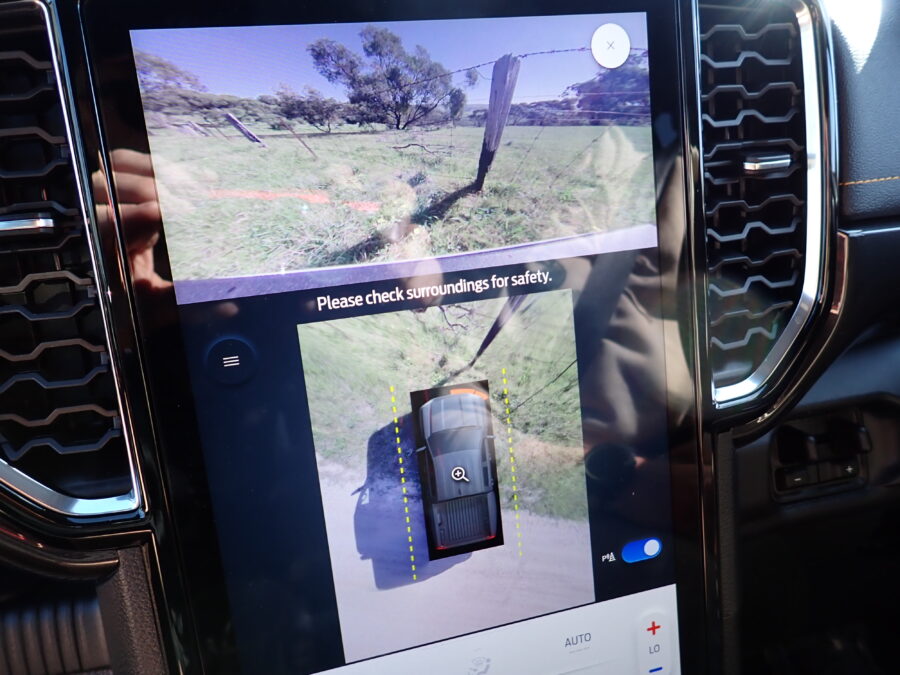
Because this is a website about exploration and using 4WDs to do it, I’m going to concentrate on the dirt roads, because that is way more important.
Buy the V6 and you get the 4WD system with the lot, a part-time/full-time transmission shared with the Everest.
Your selector options are 2H = 2WD, 100% of the drive to the rear wheels only, 4A = 4WD auto permits an AWD experience with a variable torque distribution front to rear and great on wet or dry bitumen, 4H = 4WD HIGH range with 50-50% front and rear torque split for loose surfaces only as it is part-time, and lastly, 4L = 4WD LOW range and again, loose surfaces, part-time only.

You quickly work out that the sweetest selection to be in is 4A when around town, on the highway and on well-made dirt, because like all 4WDs running an AWD mode, that’s when they’re doing their sharpest steering and stopping.
The bi-turbo is dumbed down a little in this department because Ford carried over the part-time transmission from before. I assume for a price-point of difference. You’ve got three position on the knob with this jigger, 2H = 2WD, 4H = 4WD HIGH range, loose surfaces only and 4L = 4WD LOW range. Missing the AWD 4A mode isn’t a deal-breaker, but, like I said before, on those days when the weather Gods are playing silly buggers, grip is everything and 4A will deliver it.
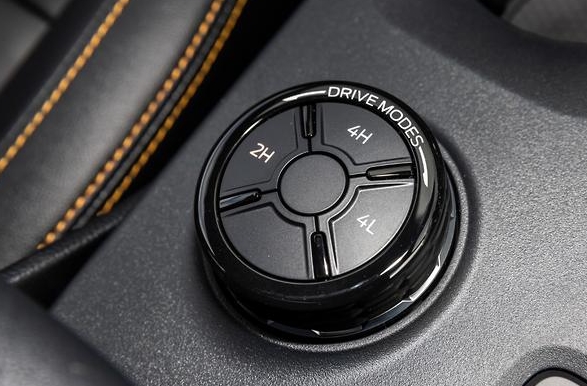
No complaint though on the main gearbox because both Rangers run a ten-speed auto with a sports-shift function for critical manual gear selection on the trails.
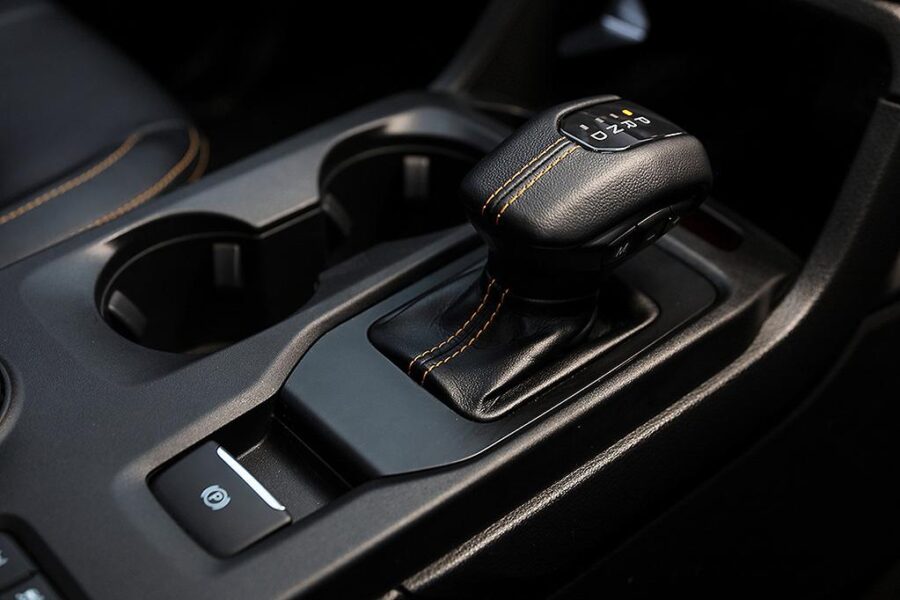
The same Neanderthals complain that more gears means more gear changes and sure, you’ll hear the transmission at work shuffling up and down through the cogs, but that’s the point. Having more gears (six of them) keeps the motor in its fattest torque zone, along with offering more overdrive gears (four of them) to keep the highway engine speeds modest, the best of both worlds. More consistent zing, with no big gaps or lag between gear changes and better fuel efficiencies really floats my boat.
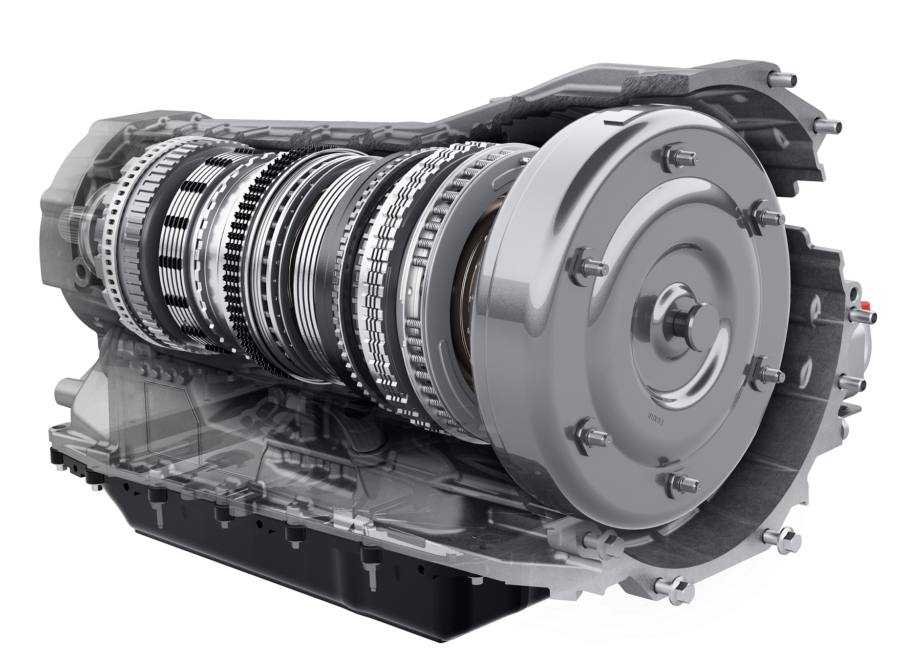
I mentioned stopping a little while ago.
This is a bit of a hallelujah moment for me as I’ve been on a crusade forever and arguing that utes deserves disc brakes all round, instead of this preposterous nonsense that a Thai tax-break rules sway over passenger safety. Drum brakes have always sucked. Always.
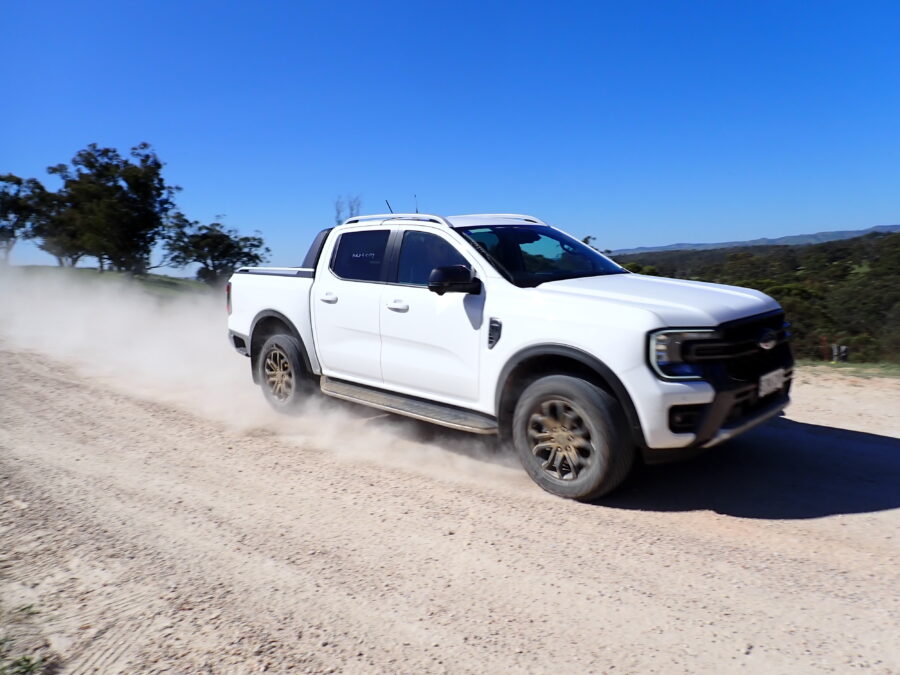
Ranger Wildtrak gets a disc brake back end and it is a magnificent thing, because it stops and without fade. Servicing costs will be a pittance compared to my usual winter experience with another brand that’s blighted by drums, where I’ll typically use two sets of brake shoes and need a drum skim annually, and all because of a bit of trackside slush.
You could, I suppose, spend a few more quid and go the Raptor to achieve the full ute Nirvana (or is that Navara) ideal of a coil sprung rear axle for maximum flexibility, but Ranger Wildtrak stays with a leaf spring rear and IFS up the front.
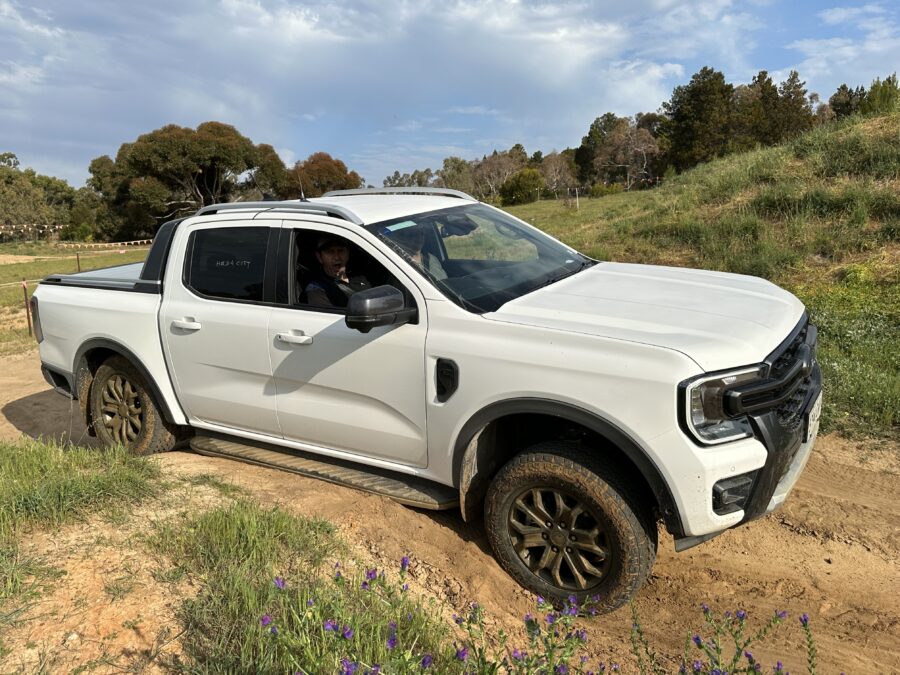
Off-road there is just enough flex and stretch before Ranger cocks a wheel in the air and there needs to be plenty of that stretch, because the downside to being a bigger ute means that things like that 3,270mm of wheelbase gets in the way of crests and humps. You’ll drag steps and chassis in places because the car is long. Stuff like that can be fixed pretty quickly with a suspension change along with a slightly taller/legal tyre enhancement. It is something I do every time I buy a new vehicle.
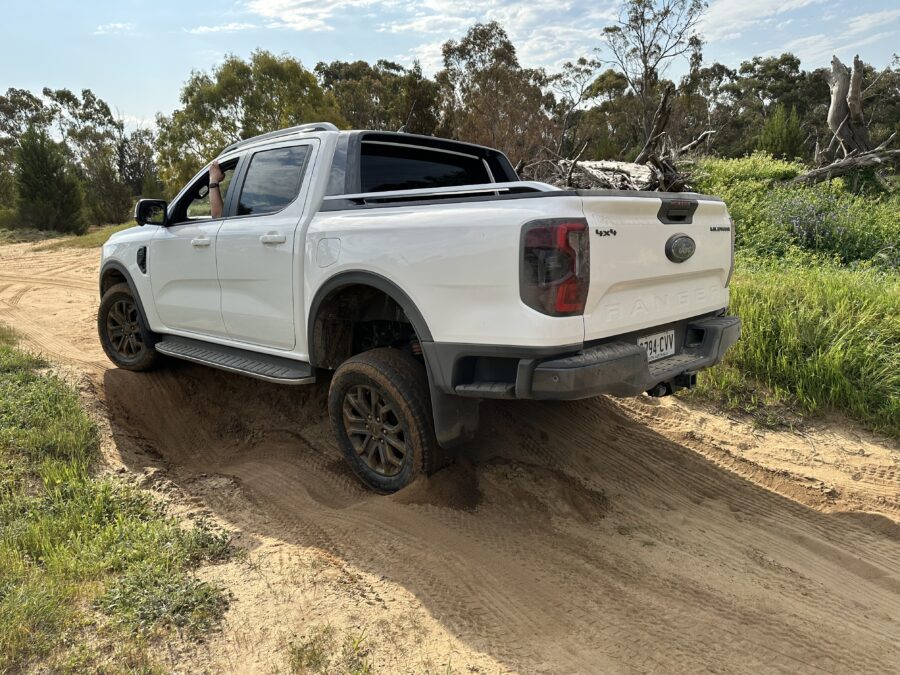
Like me, you’ll want the suspension change and especially so if you tow, because the difference is chalk and cheese.
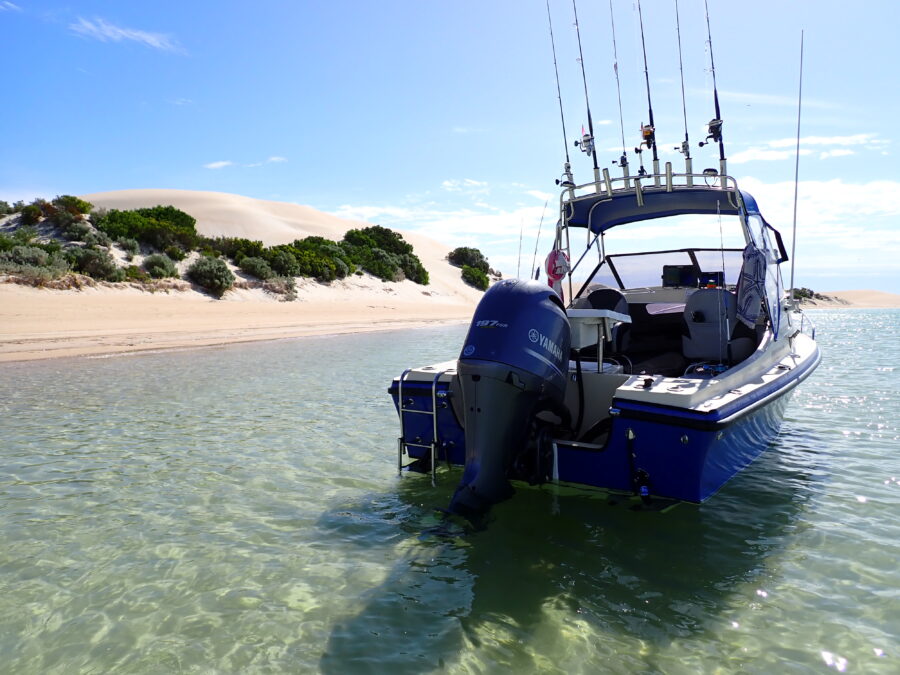
Our 2.5T test sled, an eighties CruiseCraft half cabin with a 200HP Yamaha hanging off the back really got the sags going on our V6 demo, dipping the back end by a good 60mm, leaving the nose pointing skywards.
Both the bi-turbo and the V6 get selectable drive modes which tune the engine and gearshift points for the load and terrain it’s being driven on with Normal/Eco/Tow/Slippery/Mud/Sand. Coupled to that is a locking rear differential with easy engagement and the traction control system was nicely tuned to cut in on the hard stuff in LOW range at just off idle, as it should.
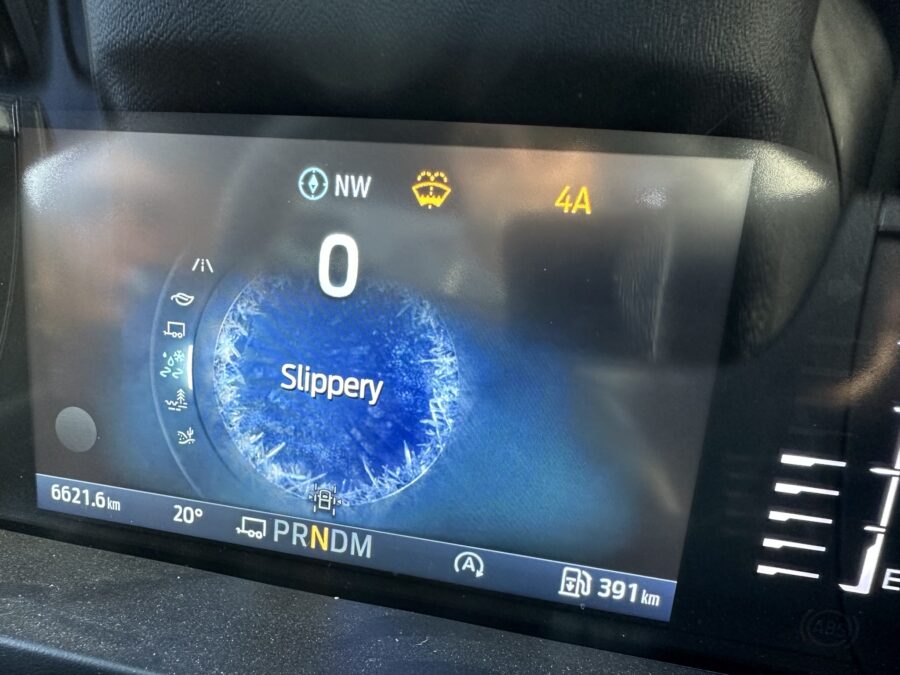
The tyres are rubbish, an eighteen inch fitment and claiming to be an All-Terrain, but it’s a Goodyear pretender, a passenger car tyre wearing a pretty face in a dumb size – 255/65R18 111H, the last detail gives it away with a lowly load index (111=1,060kgs) and H speed rated (210km/h).
Change them you’ll want to, because they will be puncture magnets. Replace them with either a Toyo Open Country R/T or AT3 in LT265/65R18 122Q, or better, an LT265/70R17 121S and that’ll put some spinach in your pipe on an 8” rim from our good friends at CSA Alloy Wheels and available from the Loaded 4X4 Store.
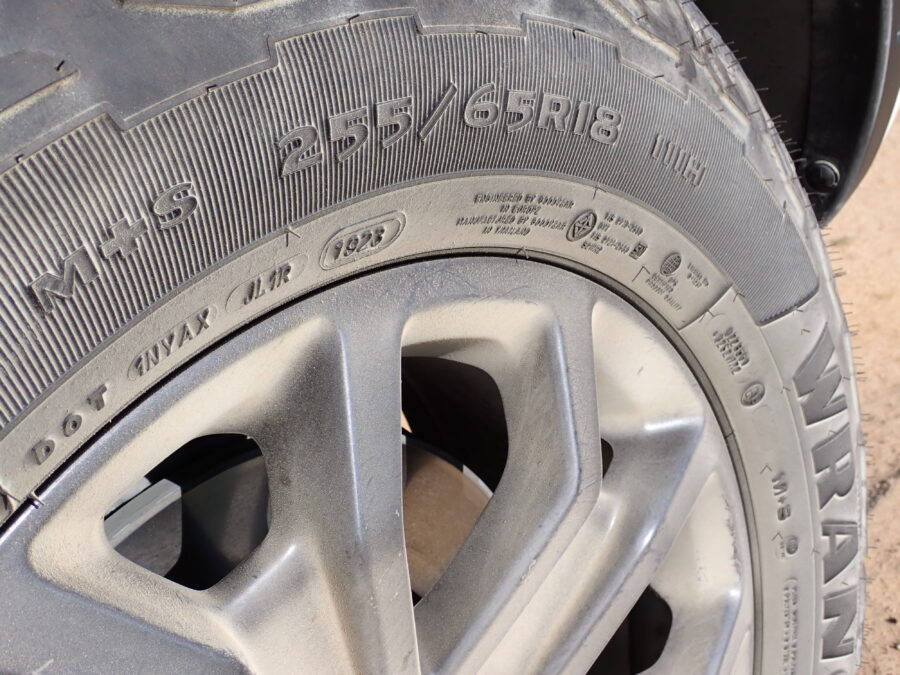
So here is the moment of truth.
Driven back-to-back, bi-turbo versus V6 and the winner is IMHO… the bi-turbo is the better vehicle.
I wanted to believe that the V6 would be a runaway success but I have to admit to being disappointed with its get-up-and-go, which was more rabbit than hare. On the contrary, the bi-turbo just feels like it wants to boogie and that could be down to some clever gearing, but it is a sprightly motor.
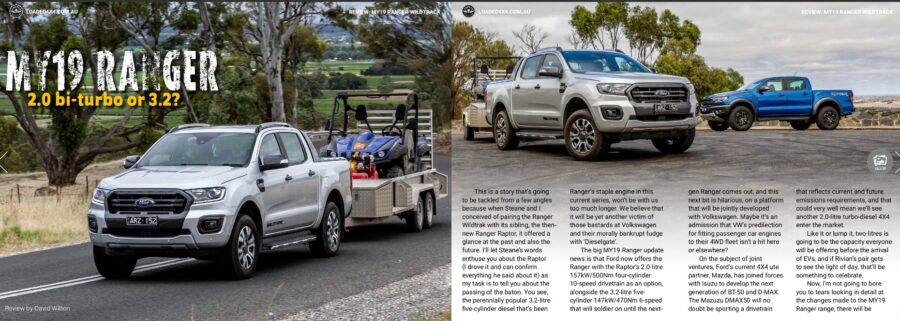
I remember when Ford introduced the bi-turbo four years ago I did a comparo test with it against its bigger brother, the 3.2L five cylinder, and feeling similarly underwhelmed with the bigger capacity motor. To really prove what I was sensing I hooked up my alloy tandem trailer and loaded it with a Yamaha SSV and tools, weighing just over 2.0T and at the top of Mengler Hill in the Barossa Valley (SA) the 3.2L was flat-knacker in third gear at 80km/h. What was telling at the same spot was the bi-turbo was in fifth gear and still accelerating hard at 95km/h. No contest.
You’ll all bang on about durability that the little motor won’t last. I doubt that’s an issue because when I asked of the lineage of the Ranger’s 2.0L offering I was told it is used internationally in the Transit van. I have no doubt that if you were to keep a bi-turbo for three to five years and clock up around 150,000kms and service it on the button you’ll have a drama-free experience and warranty coverage in case something goes snafu. Betcha there’s plenty of Transits with 500,000kms on the clock.
Nup, if I were a Ranger Wildtrak buyer I’d be doing the sums on the bi-turbo, because the V6 commands a premium at around $72K plus on-roads, whereas the bi-turbo chimes in around $68K plus on-roads. That leaves some coin for fixes to the suspension and a bit of change towards the tyres and makes a lot more financial sense to me, especially when you add in fuel-efficiency.
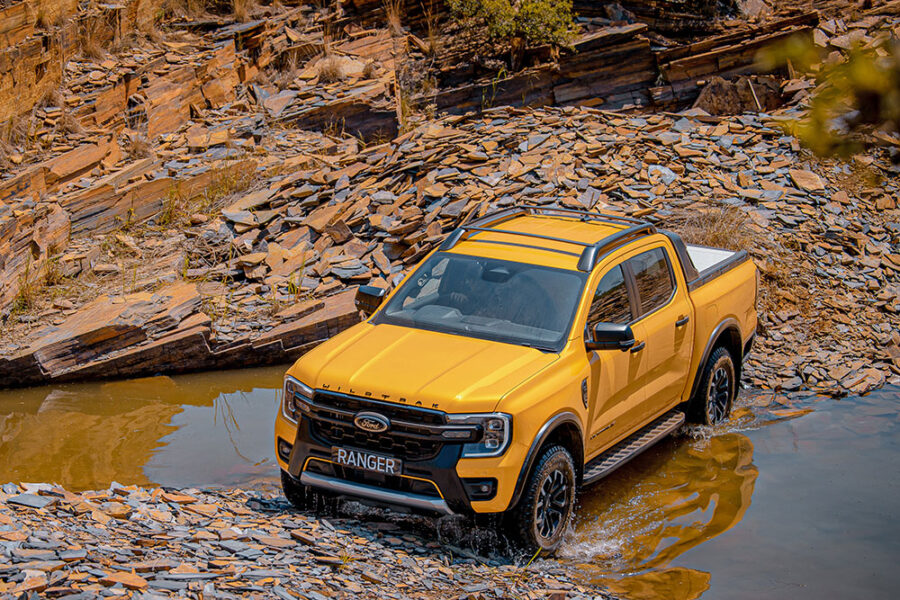
But in a have-your-cake-and-eat-it-too moment, Ford late last year introduced the Wildtrax X to the range, a bi-turbo with a Bronco theme.
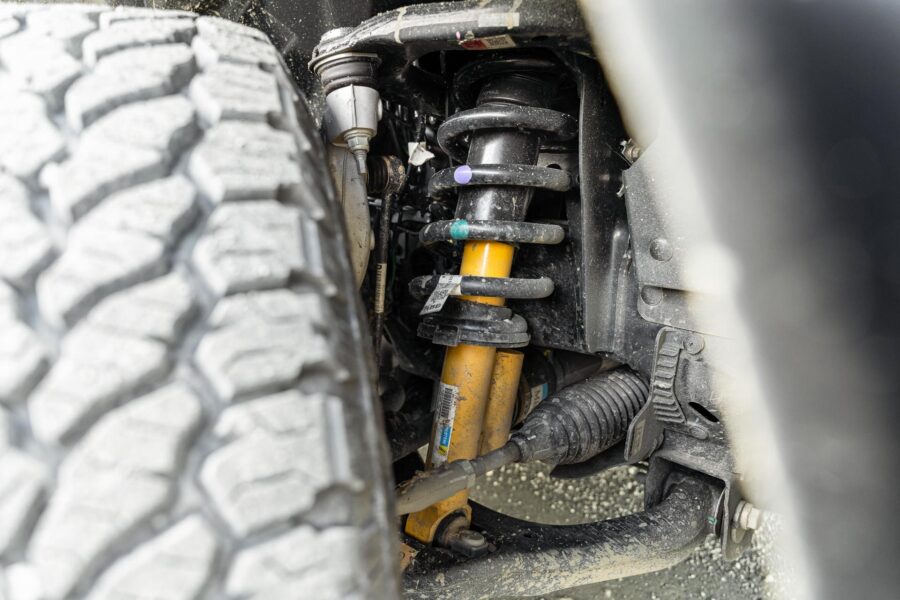
Add sensible 17” wheels and General Grabber AT tyres, the full-time transmission seen in the V6, Bilstein shocks, more clearance, a neat tub tie-down system like Nissan’s Utili-Trak, a proper bash plate, Trail Control and Rock Crawl off-road modes and a bunch of bling to make it stand out from the crowd and priced at around $76K plus on-roads. This might well be the pick of the crop, a blending of the best bits.
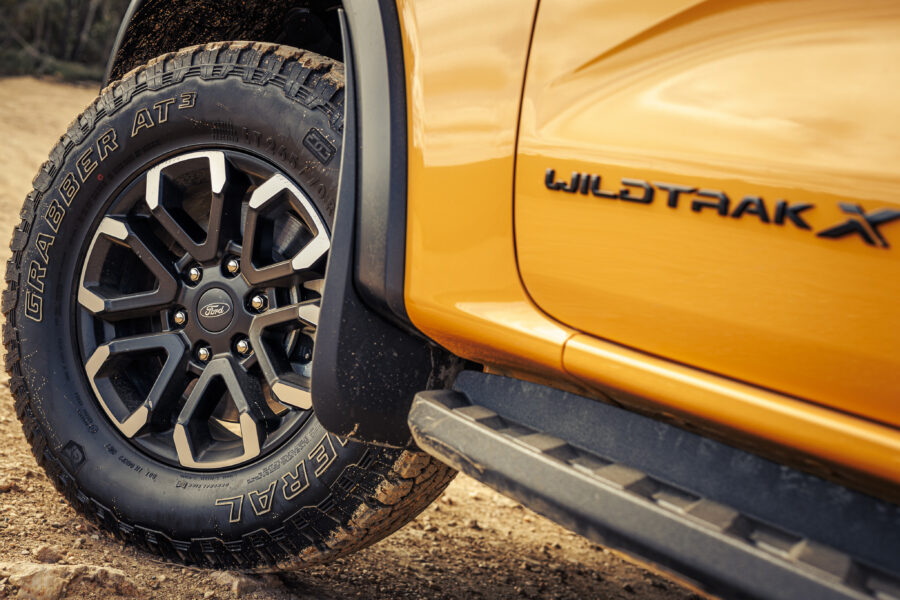
In 2024 the accepted norms need to be challenged. I can tell you that the Ranger bi-turbo sauce bottle I’ve been sipping on isn’t laced with meth, it truly has got the spicy bit of the kilowatt-ketchup recipe going and it is a sweet ride. You ought to try it.





GIPHY App Key not set. Please check settings